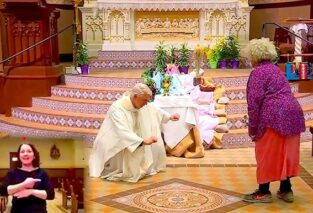I am a believing, practicing Roman Catholic and, like many people of my faith, I have a favourite prayer method, the “Lectio Divina,” a Latin term for “divine reading” or “sacred reading.” It is a prominent method of spiritual nourishment and scriptural study that has been used mainly in monastic communities as far back as the Middle Ages. It is a way to encounter God’s presence through Sacred Scripture, and it helps me to deepen my relationship with God.
During his pontificate (2005-2013), the late Pope Benedict XVI, the 265th Successor of Saint Peter, encouraged the Church to revive this method of prayerful scripture reading, meditation, and contemplation, which allows individuals to deeply reflect on the word of God, and open themselves to the transformative work of the Holy Spirit.
This prayer method is used in small Christian communities in my home diocese, the Archdiocese of Douala in Cameroon. It is a prayer method that follows a step-by-step guideline consisting of what the Jesuits call the “Five Ps”.
- The first ‘P’ is ‘Passage’: select a passage from the Bible that you would like to meditate on. It can be a few verses or a longer passage.
- The second ‘P’ is ‘Place’: After selecting the passage to meditate on, you choose a place that is free of noise or distraction where you can be alone.
- The third ‘P’ is ‘Posture’: How you sit, kneel, or stand, is important because the posture you select helps your concentration during your prayer. It is therefore important to be relaxed and peaceful as you pray.
- The fourth ‘P’ is for ‘Prayer’: Before you start reading the selected passage, take a deep breath and invite the presence of God in a short prayer. Call on the Holy Spirit to guide you so you can draw sustenance from God’s word in the selected passage.
- The fifth ‘P’ is reading the ‘Passage’ you have selected. Read it slowly and aloud while listening carefully and peacefully to every word or phrase. You can read the passage at least twice, or even multiple times, to fully absorb its meaning.
When you have read it a few times over, you then meditate on what you have just read. Reflect on the passage, allowing the words to resonate with you. Consider the context, the emotions it evokes, and any other personal connections you can draw from the passage.
Listen to what God is telling you through his words. Hearing God’s words in noise is difficult, so silence is vital. Sometimes you may feel or hear nothing. That is still ok. Don’t be discouraged. God sometimes speaks to us in his silence. In his seeming absence, he is still very close to us. When you finish your meditation, you then conclude with a prayer. It can be the ‘Our Father’, ‘Hail Mary,” or any other prayer you choose. Remember that God continues to live in you throughout your day or night.




